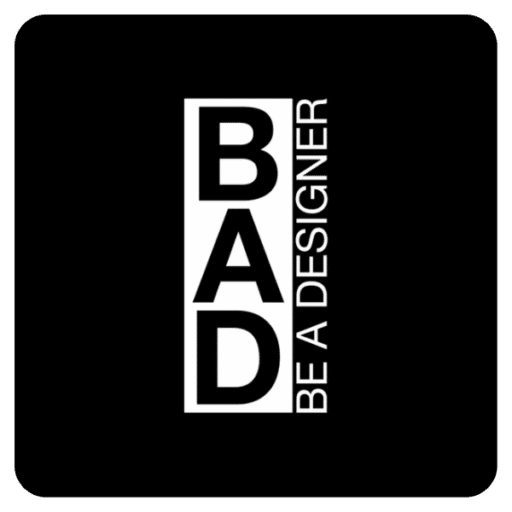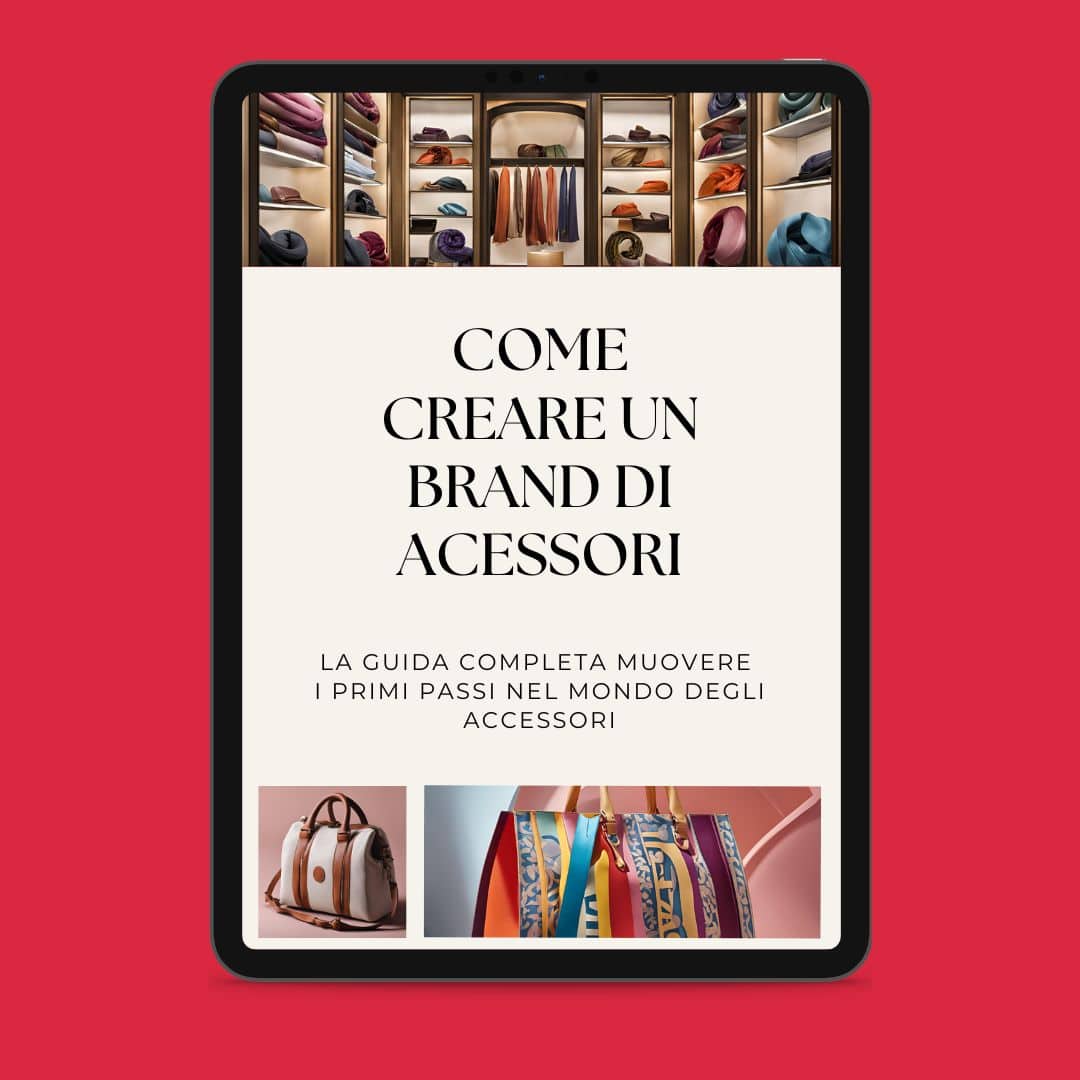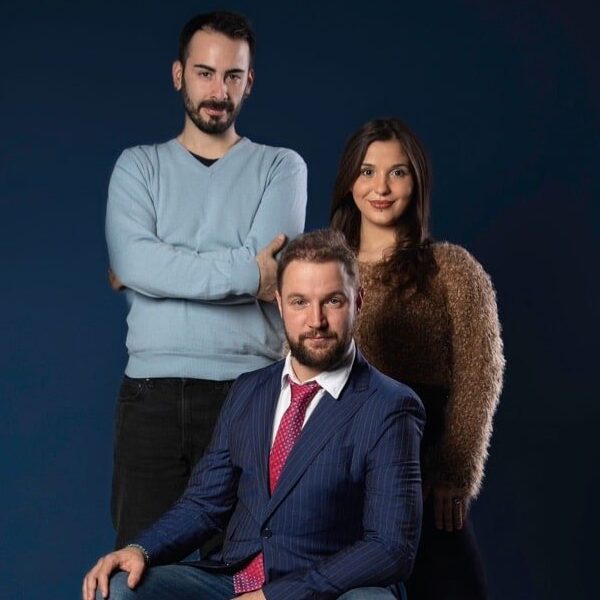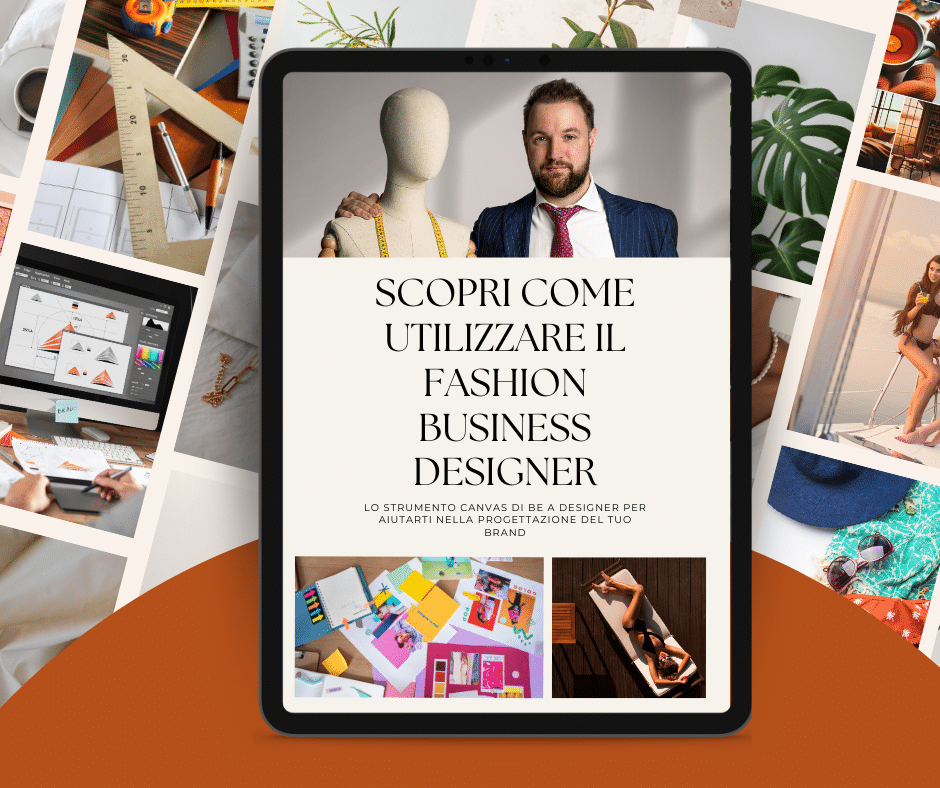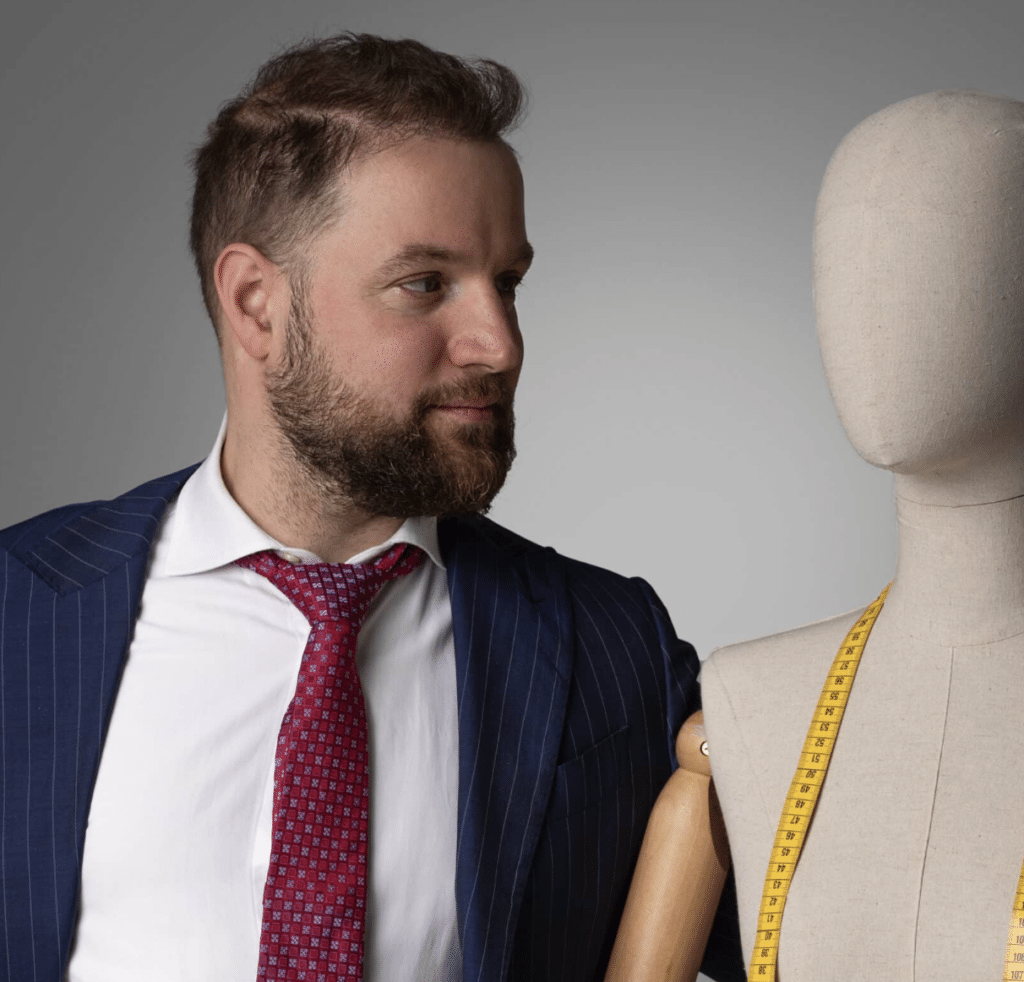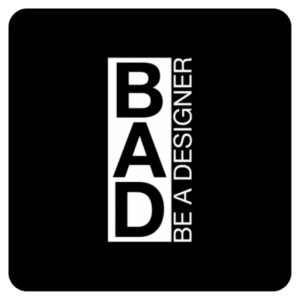Accessories are not just complements, but real distinctive style elements that can make a difference to the positioning of a brand. With the BADwhich I have developed, you can follow a structured and practical path, exploring each stage from design to sale with a focus on sustainability, marketing and strategic partnerships.
They are Corrado Manenti and for years I have been helping designers and entrepreneurs turn their passion for fashion into successful brands. Creating a fashion accessories line is an exciting path, but it requires a well-defined strategy to stand out in a competitive market.
If you want to learn more about how to create a solid base for your brand, check out our guide on how to create a fashion brand.
The importance of fashion accessories in the fashion industry
Fashion accessories play a central role in defining and enhancing every look, going beyond a simple decorative function. They represent the detail that can give character to an outfit and tell a personal style: a carefully chosen necklace can add sophistication to an essential dress, while a particular bag communicates uniqueness and personality.
This ability to transform and enrich clothing makes accessories an indispensable element for those who like to play with looks, arousing growing interest among both consumers and creative people in the industry.
How to start a fashion accessories brand: strategy and positioning
Business Plan development for a fashion accessories brand
Creating a business plan effective for a fashion accessory line is the first step to success. A well-structured plan must include:
- Production cost analysis,
- Pricing strategies,
- Revenue projection.
A key aspect is the selection of distribution channels: selling through e-commerce, physical boutiques or marketplaces directly influences the overall brand strategy. Defining a clear business model helps to to position oneself competitively in the fashion market.
Creating a recognisable brand identity and logo
A?brand identity solid is essential for differentiation in the fashion accessories industry. The brand name, logo, colour palette and tone of communication must be consistent and able to communicate brand values.
A strong visual identity improves the brand recognition and facilitates customer loyalty. Creating a distinctive logo and attractive packaging can make a difference in product perception.
Identifying the market niche for fashion accessories
Identifying a specific niche is crucial to stand out in the accessories industry. The fashion market is highly competitive, so it is important to focus on a well-defined audience.
Some examples of profitable niches:
- Sustainable accessories,
- Handmade luxury bags,
- Personalised jewellery.
Understanding the needs of the niche and studying the competitors helps refine the marketing strategy.
Marketing strategies for selling fashion accessories
The digital marketing is an essential tool for promoting a fashion accessory line. The most effective strategies include:
- SEO for e-commerce to improve visibility in search engines,
- Social media campaigns to engage the audience,
- Collaborations with influencers to give authority to the brand.
Use valuable content, such as product demonstration videos and storytellinghelps to create connections with customers. In addition, strategies of retargeting and email marketing can increase conversions.
Trend analysis and innovation in the accessories sector
Study the market trends enables the development of collections in line with public tastes. Analysing emerging colours, materials and styles helps predict future demands.
Furthermore, innovate through the use of:
- Sustainable materials,
- Advanced technologies,
can offer a competitive advantage. Companies that invest in research and development are better able to respond to changing consumer needs.
If you would like to learn more about how to create a solid base for your brand, see our guide on how to create a fashion brand.
The importance of fashion accessories in the fashion industry
Fashion accessories play a central role in the define and enhance every lookgoing beyond a simple decorative function. They represent the detail that can give character to an outfit and tell a personal style: a carefully chosen necklace can add sophistication to an essential dress, while a particular bag communicates uniqueness and personality.
This ability to transform and enrich clothing makes accessories an indispensable element for those who like to play with looks, arousing growing interest among both consumers and creative people in the industry.
Market trends and opportunities for new designers
The fashion accessories market is emerging as one of the most dynamic and exciting sectors of the fashion system. Products such as bags, jewellery, belts and hats are no longer just complements, but true protagonists of a unique and personal style. Increasingly discerning consumers are looking for items that combine beauty and meaning, tell a story and respect ethical and environmental principles.
This evolution in customer preferences represents an extraordinary opportunity for new designers. Creating collections that integrate sustainability, innovation and a strong emotional impact is the key to standing out in a highly competitive market. Investing in sustainable materials and offering products that meet the values of authenticity and quality can pave the way to lasting success and a unique positioning in the fashion accessories industry.
Planning and design
The design phase represents the?essence of your creative journey: it is here that ideas are transformed into a concrete project and the first distinctive elements of your fashion accessories line come to life. This moment is crucial for outlining a strong and coherent identity, capable of standing out in an increasingly competitive market.
Following a structured approach, such as that offered by the BAD method, allows every aspect of design to be approached with clarity and precision. From the identification of market trends to the choice of materials, each step contributes to building an innovative collection in line with the expectations of an attentive and demanding public.
Thanks to the BAD method, you can establish a solid basis for a collection that is not only aesthetically appealing, but also strategically designed to stand out in the fashion design scene.
What do we mean by 'accessory'?
In the fashion industry, the term 'accessory' encompasses a wide range of products that enrich and complete an outfit, without being main garments. Each accessory belongs to a specific production chain and possesses unique characteristics related to materials and processing techniques.
- Leather goods: Bags, belts, wallets and gloves are part of the leather line and are made from high-quality materials such as cowhide, exotic leather or environmentally friendly alternatives. (Article line bags)
- Silk industry: Scarves and foulards belong to this category, often made of silk, wool or innovative technical fabrics. (Article scarves)
- Costume jewellery and jewelleryEarrings, necklaces, bracelets and rings can be made of precious metals or alternative materials such as resins and semi-precious stones.
- Hats and headgear: From felt to woven straw, these accessories add a distinctive touch to any look. (Article Hats)
Accessories represent a strategic opportunity for a fashion brand, as they allow greater versatility and segmentation of the offer without the more rigid production constraints typical of clothing. Knowing how to enhance one's collection through a well thought-out selection of accessories can strengthen brand identity and increase the value perceived by customers.
The Collection PyramidTM applied to accessories
The Collection Pyramid is a strategic method of dividing the items in the collection into three distinct levels based on their price and design content. This approach makes it possible to diversify the offer and create an effective positioning strategy without diluting the brand identity.
- ASPIRATIONAL: The high-end accessories, characterised by exclusive designs, fine materials and sophisticated details. These are the flagship products of the collection, intended for a select audience. For example, a handcrafted leather bag with gold metal details and numbered in a limited edition could be an iconic piece in this category. These items create desire and increase the brand's perception of value, despite being produced in limited quantities.
- MASSIVE IMPACTThey represent the heart of the collection, with a perfect balance between quality design and competitive price. For example, a line of faux leather bags with fine details and trendy colours could fall into this bracket, designed to be accessible to a wider audience but without sacrificing style and quality.
- LOW BUDGETEntry-level products intended for those approaching the brand for the first time. These accessories retain the brand identity, but at a more affordable price. For example, a leather key ring with the brand's logo, a scarf with an exclusive pattern or a small clutch bag are the perfect entry point for those not yet ready to invest in higher-end products.
The aim of Collection Pyramid is to create a harmonious offer in which each level has a specific function in engaging the audience and building the perceived value of the brand. In this way, customers can choose according to their economic needs, without giving up the experience of belonging to the brand world.
Selecting quality and sustainable materials
The choice of materials is a decisive aspect for the success of your accessory line. Innovative materials such as vegetable skins or recycled fabrics offer not only high quality, but also meet the growing consumer demand for sustainability. Imagine, for example, using recycled jeans to create a bag: you will not only give new life to waste materials, but also tell a unique story through design.
Opting for high-quality, environmentally friendly materials not only means creating better products, but also positioning your brand as responsible and innovative. This approach is key to conquering a market that is increasingly aware of ethical and environmental values.
Creating prototypes: from ideas to samples
Prototyping is an essential step in transforming an idea into a concrete product. Work with specialised craftsmen and workshops to develop samples that reflect your concept and meet high quality standards.
At this stage you must clearly communicate your requirements to the manufacturers, providing detailed specifications, technical drawings and visual references. Prototyping will allow you to verify materials, functionality and design, and to make any changes before final production.
Integrating functionality and aesthetics in designs
A successful accessory combines aesthetics and functionality. Besides being beautiful, your products must be practical and comfortable. Think of a design that makes your customers' lives easier and at the same time makes them fall in love with your style.
To achieve this balance, put the customer at the centre of your creative process. Ask yourself what their daily needs are and how your accessory can improve them. For example, a bag should not only be beautiful, but also spacious, light and with well-organised pockets. Experiment with innovative shapes, but maintain a focus on functionality.
Production and choice of suppliers
Having completed the design phase, the next step is to turn your accessories into real products. The production phase is the moment when your creative ideas materialise and take shape, so careful planning and strategic management is required to ensure that each piece meets high standards in terms of quality, sustainability and ethics.
By following the BAD method, you can approach this phase with confidence, using proven tools and strategies to maintain control over the entire production process and guarantee excellent results.
Finding reliable manufacturers and suppliers
The choice of suppliers is decisive for the success of your project. Working with trusted manufacturers allows you to ensure that your accessories meet the agreed quality criteria and timelines.
To identify reliable partners, start with a thorough search, assessing both local and international manufacturers. Analyse their experience, references and ability to work with specific materials.
Arrange meetings or video calls with suppliers to discuss your needs and request samples of their work to assess quality and attention to detail. Establishing a relationship of trust with your production partners will be crucial to building a solid foundation for your brand.
You can learn more how to find reliable suppliers in our dedicated guide!
Collaborating on small productions
If you are an emerging designer, starting with limited productions is a strategic choice. This approach allows you to contain costs, test the market and gather feedback by customers without committing to large quantities.
Choose suppliers who are willing to support short runs without compromising on quality. The BAD method helps you plan sustainably even for small production runs, while maintaining a constant focus on quality and optimised costs. In addition, consider collaborations with handicraft workshops: these partners can offer greater attention to detail and a high level of customisation, adding value to your accessories.
Ensuring quality control during production
Maintaining high quality standards guarantees you success and a good reputation for your brand. Quality control must be integrated at every stage of production to ensure that the final products live up to expectations.
Prevedi regular inspections and establish from the outset clear criteria with your suppliers. It documents every step, defining reference standards for materials, processing and packaging. This structured approach allows you to identify and solve any problems before products reach the market.
With the BAD method, you can create customised checklists to monitor every detail and ensure that the final product meets your creative vision. Effective quality control not only protects your brand, but also builds trust and loyalty in your customers, representing an impeccable business card for your brand.
Selling your fashion accessory line
The success of your line also depends on your ability to reach the right customers and convince them of the unique value of your products. Sales is the bridge connecting your project to customers, requiring a well-structured and success-oriented strategy. Identify the right channels e creating a memorable shopping experience are key elements to stand out in a competitive market.
E-commerce platforms and marketplaces for online sales
Opening an online shop is indispensable for reaching a wide audience and expanding sales opportunities. In recent years, e-commerce has become a key tool for emerging brands, thanks to platforms such as Shopify or Etsy, which offer affordable solutions for setting up and running a virtual shop.
To achieve significant results, however, it is important to take care of every detail: from eye-catching and professional images, to product descriptions, to strategic social media management, which can increase traffic to your e-commerce and strengthen your positioning in the global market.
Pop-up shops and local retail shops
Pop-up shops and local shops allow you to make direct contact with your customers, receiving immediate feedback on your products. Setting up a pop-up store is not only about selling, but also about telling people about your brand.
Set up an attractive space with a design that reflects your brand identity and consider activities that enrich the customer experience, such as live demonstrations or exclusive presentations of new products. Collaborating with established local shops can also strengthen your credibility and help you reach a wider audience.
Offering unique experiences to attract customers
Creating memorable experiences is a powerful strategy for building a lasting bond with your customers. Events such as design workshops, accessory customisation sessions or exclusive presentations not only add value to your brand, but also generate enthusiasm and positive word-of-mouth.
These activities are not just sales moments, but opportunities to reinforce your brand identity and make your brand part of an experience that customers will want to talk about.
Starting a fashion accessory line requires dedication, creativity and careful planning. By following this guide, you will be able to tackle each step of the process successfully and bring your vision to the fashion world. If you would like customised support, discover the services of consulting Be A Designer.
Your next step
IF YOU LIKED THIS ARTICLE WRITE ME A COMMENT BELOW AND SHARE IT, IT WILL BE A PLEASURE TO ANSWER YOU ?
Would you like to join me and other visionary students on an innovative path where we will set out to conquer the world of fashion?
WARNING!
If you have read this article, it is because you are certainly a fashion enthusiast, but the real reason why you read about these topics on my site and not in a fashion magazine is because you have most likely had the idea of creating your own fashion brand in your mind for some time.
I am Corrado Manenti and for more than 10 years now I have founded the first independent style office specialised in supporting emerging designers in the development of their collections and in their path to self-entrepreneurship.
If you are a designer or simply a creative person and have always dreamed of making your own fashion collection and selling it, you are in the right place!
Will 2025 be the year to bring your project to life?
? **Make a free consultation with me and let's evaluate the future of your project together!
